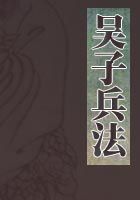As soon as we reduce the values, now expressed in money, to labor-time, the contradiction becomes even more absurd.By the 12 hours' labor, a new value of 6 shillings is created.Therefore, in 6 hours, the new value created equals 3 shilling -- the mount which the laborer receives for 12 hours'
labor.For 12 hours' labor, the workingman receives, as an equivalent, the product of 6 hours' labor.We are, thus, forced to one of two conclusions:
either labor has two values, one of which is twice as large as the other, or 12 equals 6! In both cases, we get pure absurdities.Turn and twist as we may, we will not get out of this contradiction as long as we speak of the buying and selling of "labor" and of the "value of labor".And just so it happened to the political economists.The last offshoot of classical political economy -- the Ricardian school -- was largely wrecked on the insolubility of this contradiction.Classical political economy had run itself into a blind alley.The man who discovered the way out of this blind alley was Karl Marx.
What the economists had considered as the cost of production of "labor"was really the cost of production, not of "labor", but of the living laborer himself.And what this laborer sold to the capitalist was not his labor.
"So soon as his labor really begins," says Marx, "it ceases to belong to him, and therefore can no longer be sold by him."At the most, he could sell his future labor -- i.e., assume the obligation of executing a certain piece of work in a certain time.But, in this way, he does not sell labor (which would first have to be performed), but not for a stipulated payment he places his labor-power at the disposal of the capitalist for a certain time (in case of time-wages), or for the performance of a certain task (in case of piece-wages).He hires out or sells his labor-power.But this labor-power has grown up with his person and is inseparable from it.Its cost of production, therefore, coincides with his own cost of production; what the economist called the cost of production of labor is really the cost of production of the laborer, and therewith of his labor-power.And, thus, we can also go back from the cost of production of labor-power to the value of labor-power, and determine the quantity of social labor that is required for the production of a labor-power of a given quantity, as Marx has done in the chapter on "The Buying and Selling of Labor Power".[Capital, Vol.I]
Now what takes place after the worker has sold his labor-power, i.e., after he has placed his labor-power at the disposal of the capitalist for stipulated-wages -- whether time-wages or piece-wages? The capitalist takes the laborer into his workshop or factory, where all the articles required for the work can be found -- raw materials, auxiliary materials (coal, dyestuffs, etc.), tools, and machines.Here, the worker begins to work.
His daily wages are, as above, 3 shillings, nd it makes no difference whether he earns them as day-wages or piece-wages.We again assume that in 12 hours the worker adds by his labor a new value of 6 shillings to the value of the raw materials consumed, which new value the capitalist realizes by the sale of the finished piece of work.Out of this new value, he pays the worker his 3 shillings, and the remaining 3 shillings he keeps for himself.If, now, the laborer creates in 12 hours a value of 6 shilling, in 6 hours he creates a value of 3 shillings.Consequently, after working 6 hours for the capitalist, the laborer has returned to him the equivalent of the 3 shillings received as wages.After 6 hours' work, both are quits, neither one owing a penny to the other.
"Hold on there!" now cries out the capitalist."I have hired the laborer for a whole day, for 12 hours.But 6 hours are only half-a-day.So work along lively there until the other 6 hours are at an end -- only then will we be even." And, in fact, the laborer has to submit to the conditions of the contract upon which he entered of "his own free will", and according to which he bound himself to work 12 whole hours for a product of labor which cost only 6 hours' labor.















